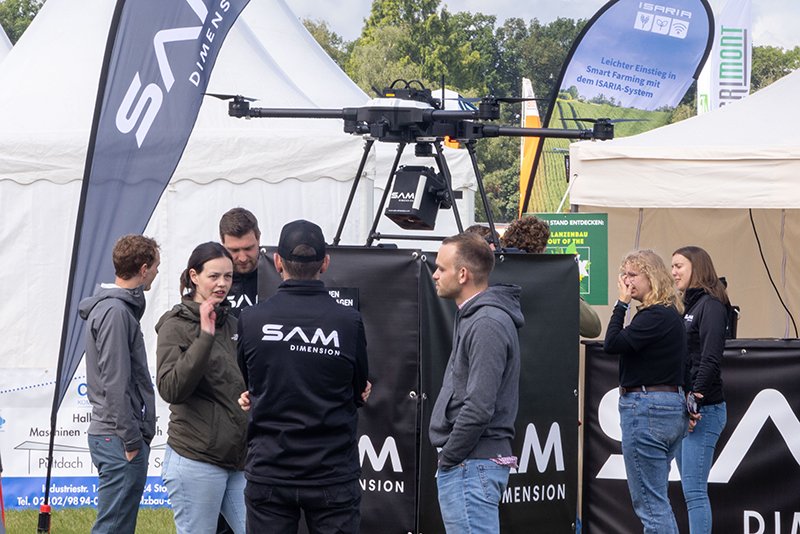Robotics Highlight at New ‘FarmRobotix’ Program DLG Feldtage


The small electric Up field robot from the Dutch startup Aigro followed a fixed pattern during the fair, mowing the grass between the imaginary rows of (fruit) trees. This is one of the tasks the vehicle is designed for. Aigro has sold several Ups.

A first in terms of a field demonstration is this Tipard 1800 modular tool carrier from the South German company Digital Workbench. The track width is adjustable, and the vehicle has automatic level control. The hoeing bar is also South German, from Kratzer. The company adapted this hoeing bar for the Tipard 1800.

Successful in Germany and several other European countries is this Farming GT hoeing robot from Farming Revolution. Farming Revolution originated from Bosch and previously also Amazone. This is actually the (final) result of the Amazone BoniRob, which was first seen at Agritechnica in 2009. There are now 22 Farming GTs active.

Naturally, AgXeed was also present at the demos. With an AgBot with wide tracks and an Amazone Cenius cultivator with AutoTill. And with this four-wheeled AgBot with the popular Ecorobotix Ara spot sprayer behind it.

Centrally in this photo is the large VTE field robot/autonomous tractor from Combined Powers, the autonomy-focused collaboration between Krone and Lemken. During the demo, the VTE pulled a Karat 10 cultivator. In the bottom right of the image is the specially developed drawbar that allows you to transport the VTE on the road behind a tractor as a trailer.

There is no shortage of AI-supported smart hoes nowadays. This InRowING from the Austrian company Farm-ING uses artificial intelligence (AI) to recognize plants and hoe around them. It can work on 3 to 11 rows in crops such as sugar beets, lettuce, cabbage, onions, pumpkins, and celery. A limited production series of 15 units has been built for this year and sold in Central Europe at prices starting from €65,000.

The Berlin startup Escarda Technologies is one of the companies combating weeds with lasers. Escarda, which means weeding, chooses diode lasers that are more efficient than CO2 lasers according to the founder. The company developed a version with 10 lasers for 5 rows of tomato plants at the request of the largest tomato grower in the United States. This currently costs between €850,000 and €900,000. Escarda is working on CE approval for use in Europe.

Also for weed control but through spot spraying based on a task map created by this drone, is what SAM Dimension from Germany does. Mainly aimed at large fields, this drone can map 60 to 80 hectares per hour from a height of 60 meters using the RGB camera developed by SAM. SAM charges €10 to €35 per hectare for this service.
Join 17,000+ subscribers
Subscribe to our newsletter to stay updated about all the need-to-know content in the agricultural sector, two times a week.



